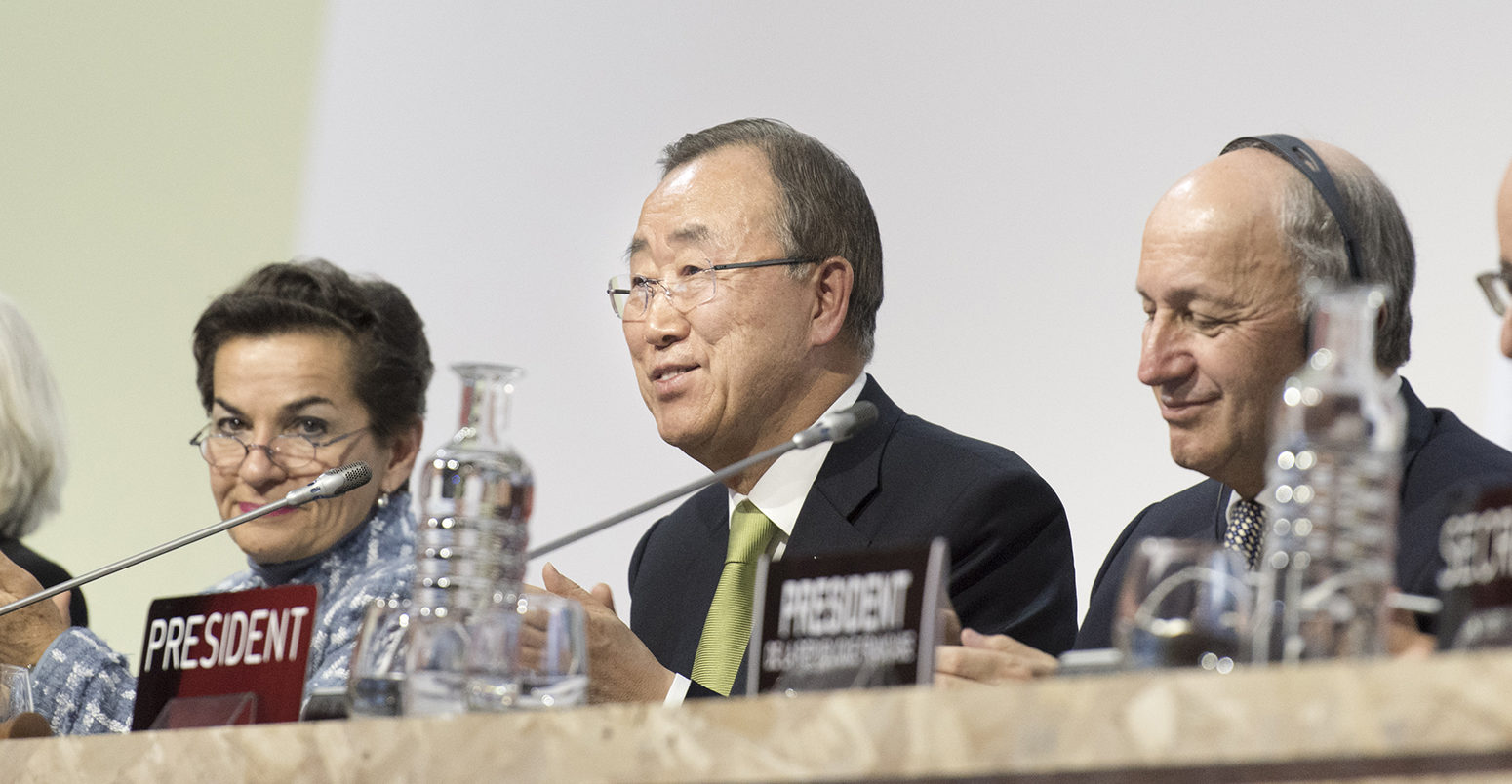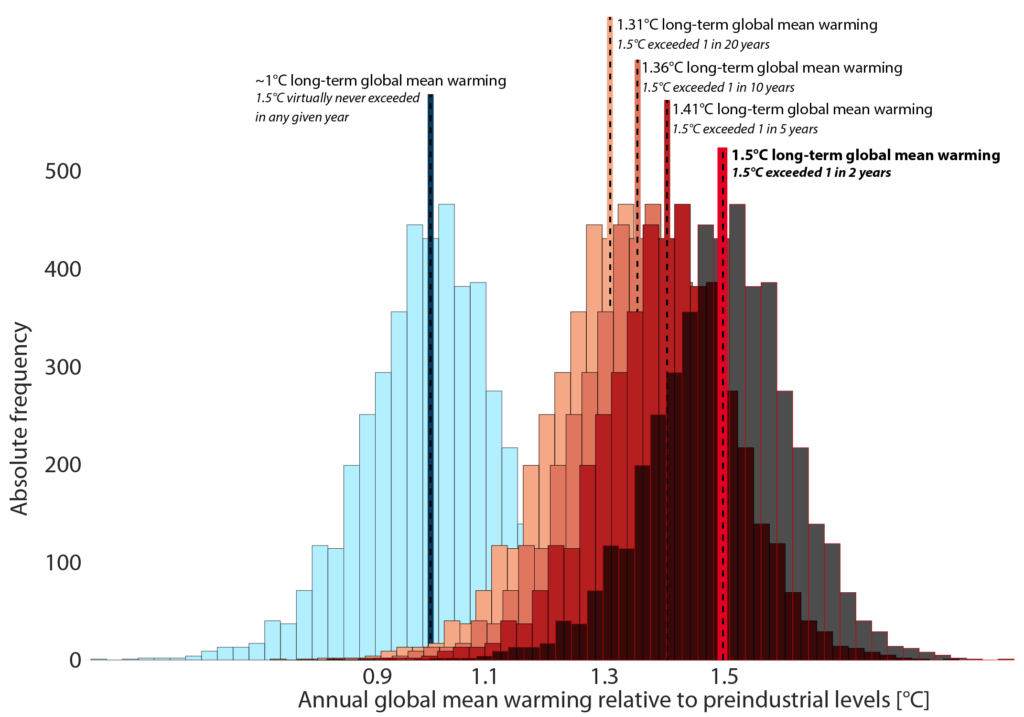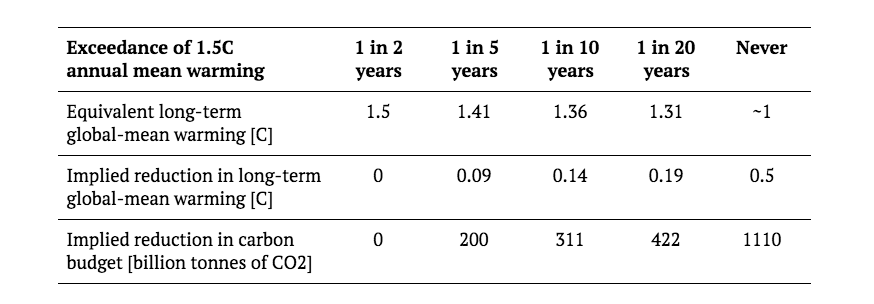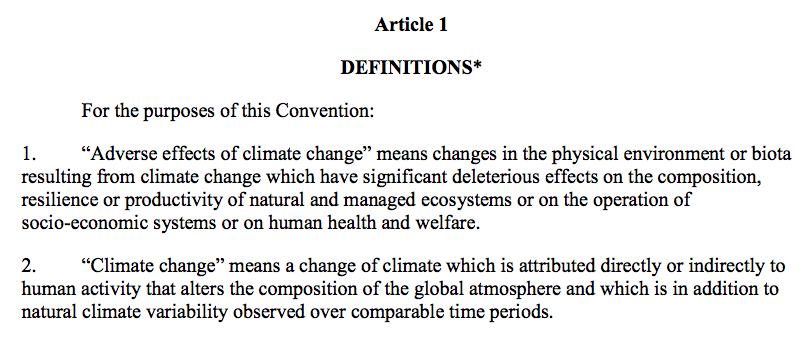
Guest post: Interpreting the Paris Agreement’s 1.5C temperature limit
Multiple Authors
10.10.17Multiple Authors
10.10.2017 | 2:09pmDr Joeri Rogelj is a research scholar at the International Institute for Applied Systems Analysis (IIASA) in Austria, and a coordinating lead author of the IPCC’s Special Report on 1.5C. Dr Carl-Friedrich Schleussner is head of climate science and impacts at Climate Analytics, and is on the steering committee of the initiative Half a degree Additional warming, Prognosis and Projected Impacts (HAPPI).
Long-term temperature limits like 2C or 1.5C above pre-industrial levels have long been used as goalposts for climate change mitigation.
Recently, these limits have received renewed attention in the scientific community, media and general public because of their inclusion in the Paris Agreement and the decision of the Intergovernmental Panel on Climate Change (IPCC) to prepare a Special Report on 1.5C.
However, the Paris Agreement itself does not spell out explicitly how such temperature limits should be used in climate policy and practice. These limits are therefore subject to interpretation, leading to confusion when trying to communicate how achievable the 1.5C limit is and the mitigation effort required.
In a commentary paper for the journal Geophysical Research Letters, we show that the temperature limits in the Paris Agreement should be understood as changes in long-term global averages attributed to human activity, which exclude natural variability.
This means 1.5C might be breached in individual years well before the global long-term 1.5C temperature limit has definitively been crossed.
Long-term goal
The long-term temperature goal agreed in Paris in December 2015 is enshrined in Article 2.1 of the final text. It outlines the aim to hold rising temperatures to “well below 2C above pre-industrial levels” while “pursuing efforts” towards the more ambitious limit of 1.5C.

The Paris Agreement final text. Source: UNFCCC (pdf)
The wording of the text is not without ambiguity (though this was arguably intentional in order to help reach agreement during negotiations). The agreement does not establish two “either-or” temperature goals, but a single goal, yet it does not make explicit how “well below 2C” or “limit to 1.5C” should be interpreted.
In the months since Paris there has been flurry of new journal papers and media articles focusing on the long-term goal – particularly the 1.5C limit – and this has highlighted the different ways in which it is being understood.
Much of the recent peer-reviewed research into 1.5C and 2C has taken the Paris Agreement temperature limits as long-term climatological global averages over multiple decades (see: here, here or here).
In others, the 1.5C and 2C limits have been compared to temperature metrics that look at smaller geographical scales or shorter time periods. These include, for example, looking at land temperatures only or at regional temperatures, or by assessing annual temperatures that include modes of natural variability such as the Pacific Interdecadal Oscillation.
Media articles have also discussed how close record monthly temperatures have come to hitting 1.5C above average.
These widely-different interpretations lead to quite different messages and insights, and have the potential to create confusion around what the long-term goal means and our chances of meeting the challenge.
Thought experiment
So, does it matter if the long-term goal is characterised in different ways? The simple answer is yes.
Widely-different interpretations lead to quite different messages and insights, and have the potential to create confusion around what the long-term goal means and our chances of meeting the challenge.
We illustrate this here with a thought experiment by showing how different warming limit interpretations affect the carbon budget for keeping to the 1.5C limit.
(We argue that one misinterpretation of international climate limits is to assume that they apply to global mean temperature rise including interannual natural variability. This is not the case – as will become clear further below – but let’s make this assumption for our thought experiment.)
Even in a stable climate, annual temperatures fluctuate around a long-term global temperature as a result of natural variability, caused by a range of unforced climate phenomena such as the El Niño-Southern Oscillation, and of variations in natural forcing, including volcanic eruptions, and variations in solar activity.
In a world where human-caused greenhouse gas emissions have taken long-term global warming to 1.5C, there would be a 50:50 chance of annual temperatures in any given year showing more than 1.5C of warming. In other words, you would expect to see more than 1.5C of warming one out of every two years on average over a sustained period of time.
Diverging interpretations of international warming limits, which look at exceeding 1.5C less frequently in individual years, make the challenge of keeping warming below 1.5C much greater.
In our thought experiment, we explore what happens when we reduce the chances of crossing 1.5C in any given year from one in two down to one in five, one in 10, one in 20, or never. The last of these levels, for example, means global temperature virtually never passes 1.5C of warming.
For this we derive annual average temperatures for each annual exceedance frequency using simulations from 24 climate models. You can see the results in the chart below, which shows the likely spread of annual temperatures as a result of natural variability.
So, for example, if we were to interpret the 1.5C limit as exceeding 1.5C of warming once every five years, we would actually need to hold the long-term global average temperature to 1.41C.
The more strictly we take the 1.5C goal, the lower the long-term average needs to be.
If we want to ensure annual global temperature never exceeds 1.5C of warming (see blue curve on the chart), we actually have to hold the long-term temperature to around 1C – a threshold we have almost reached.

Annual global average temperature anomalies from running a 21-year average for 24 climate models and the 1900-2090 period (combined historical and RCP2.6 scenario). Levels shown for four probabilities relating to the 1.5C limit, with the central bold line of each curve showing the equivalent average long-term temperature. Note: this is an approximation of natural variability, as it does not capture low frequency variability, and it also includes variations due to changes in historical natural solar and volcanic forcing. Credit: Joeri Rogelj.
Carbon budgets
Long-term temperature levels, such as those laid down in the Paris Agreement, provide guidance for short, mid and long-term global mitigation action.
One way they are used is by being translated into specific “carbon budgets” – this is the maximum amount of CO2 humans can emit while still having a good chance of meeting a given temperature limit.
Different interpretations of the long-term goal thus affect the carbon budget for 1.5C.
For example, if annual temperatures can only exceed a long-term temperature limit once every five years, the compatible carbon budget is around 200bn tonnes of CO2 smaller than the budget for once every two years. At current CO2 emission rates, that translates into using up the 1.5C budget around five years earlier.
For 1.5C never to be breached in any given year, the carbon budget would be reduced by more than 1,000bn tonnes of CO2.
This shows that there are substantial real-world policy differences involved in the interpretation of the Paris Agreement’s long-term temperature goal.
Our findings for each annual exceedance frequency are shown in the table below.

Implications of limits to the annual exceedance frequency of 1.5C for equivalent long-term global warming levels and respective carbon budgets, based on a transient climate response of 1.65C per 3664bn tonnes of CO2 (which is the average of the IPCC AR5’s likely 0.8 to 2.5C range). This estimate assumes invariable non-CO2 contributions. Reproduced from Rogelj et al. (2017). Note: the cumulative carbon budget for limiting warming to 1.5C relative to 1861-1880 in 50% of the model simulations was reported to be of the order of 2300bn tonnes of CO2 since 1870 in the IPCC Synthesis Report. A recent study, which has also been extensively covered on Carbon Brief and elsewhere online, reported updated estimates for an additional 0.6C of warming above the 2010-2019 average of about 730-880bn tonnes of CO2.
Legal and policy context
So, how can we know the correct way to interpret Paris Agreement temperature levels?
In our article, we show that the answer lies in analysis of the available information and examination of the context – in this case the legal framework of the United Nations Framework Convention on Climate Change (UNFCCC).
The United Nations Framework Convention on Climate Change (UNFCCC) – to which the Paris Agreement is a subsidiary legal instrument – defines “climate change” specifically as changes caused by human activity, without natural variability included.

UN Framework Convention on Climate Change (1992). Source: UNFCCC (pdf)
Further, the most recent IPCC assessment report provides additional clarity by defining “climate” as the statistical description in terms of the average and variability of relevant quantities over a period of time – with a classical period for averaging being 30 years, also commonly used by the World Meteorological Organisation (WMO).
In the context of the Paris Agreement, definitions set out by the UNFCCC will apply. In addition, IPCC assessment reports – particularly the most recent one – played a predominant role defining and underpinning the scientific components of the agreement.
Therefore, we argue that the long-term temperature goal in the Paris Agreement should be understood as long-term changes in climatological averages attributed to human activity – excluding natural variability.
Communicating 1.5C – the challenges ahead
Given the sensitive nature of the topic in the public debate, we think it is indispensable for the scientific community working on the topic to be well aware of the legal and scientific characteristics of the Paris Agreement long-term temperature goal.
At some point in the near future we will record the first year where the global average temperature is 1.5C warmer than pre-industrial levels. This will undoubtedly generate headlines.
Indeed, even before that, we will likely also see individual months and regions “exceeding” 1.5C.
But this won’t necessarily mean we’ve reached 1.5C of human-caused warming because a single month or year is also subject to natural variability. We need to be clear, for example, that even if a year sees 1.5C of warming, it need not mean that we have failed to fulfill the Paris Agreement – although it will provide an important warning shot.
While there are many challenges for scientists and policymakers in how we communicate climate change, being consistent about what the Paris Agreement temperature goal refers to should not be one of them. It is an essential step for providing relevant information to the public and policy debate alike.
Rogelj, J. et al. (2017) Getting it right matters – temperature goal interpretations in geoscience research, Geophysical Research Letters, doi:10.1002/2017GL075612

